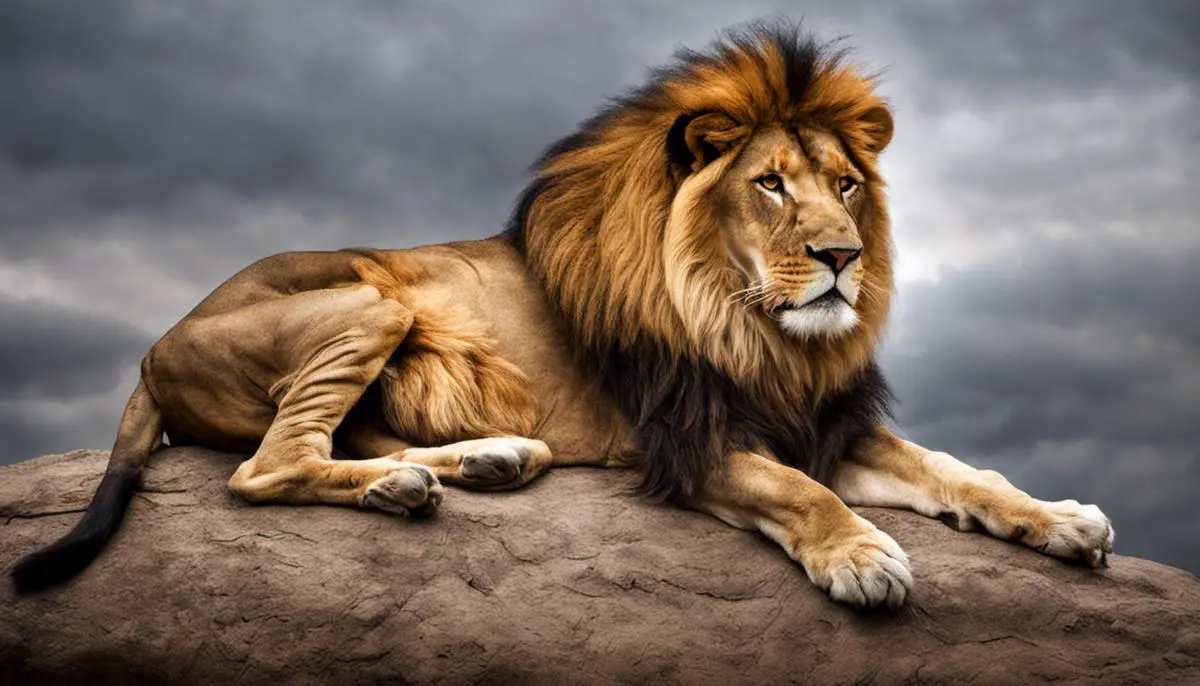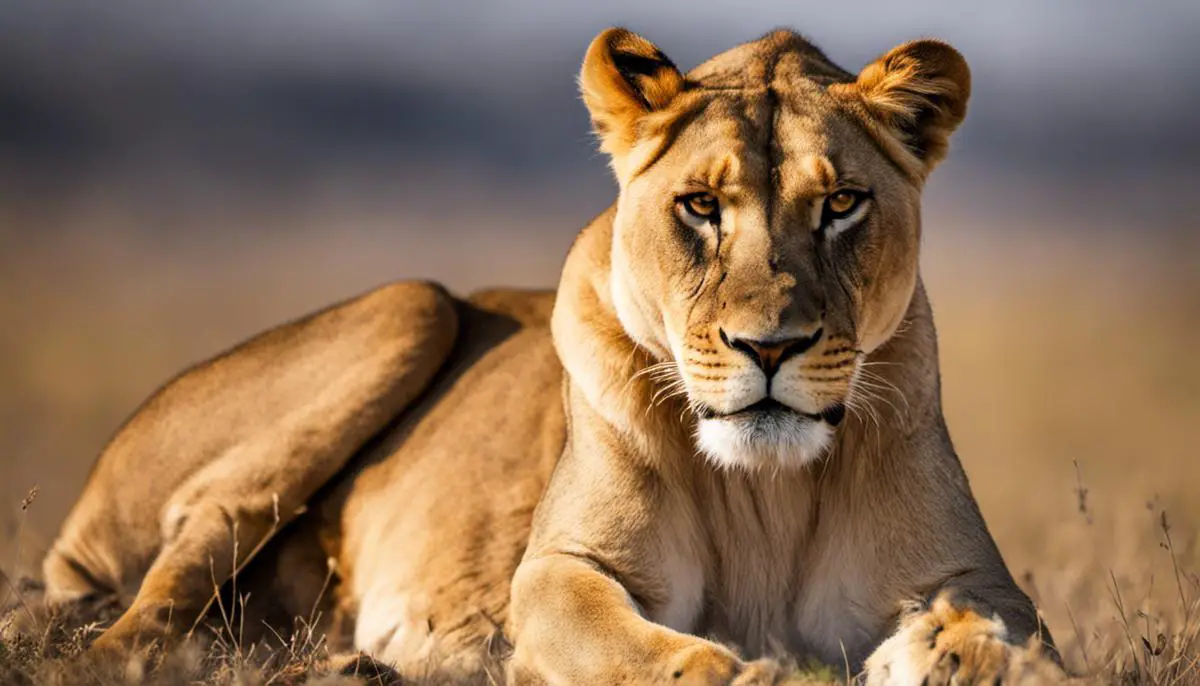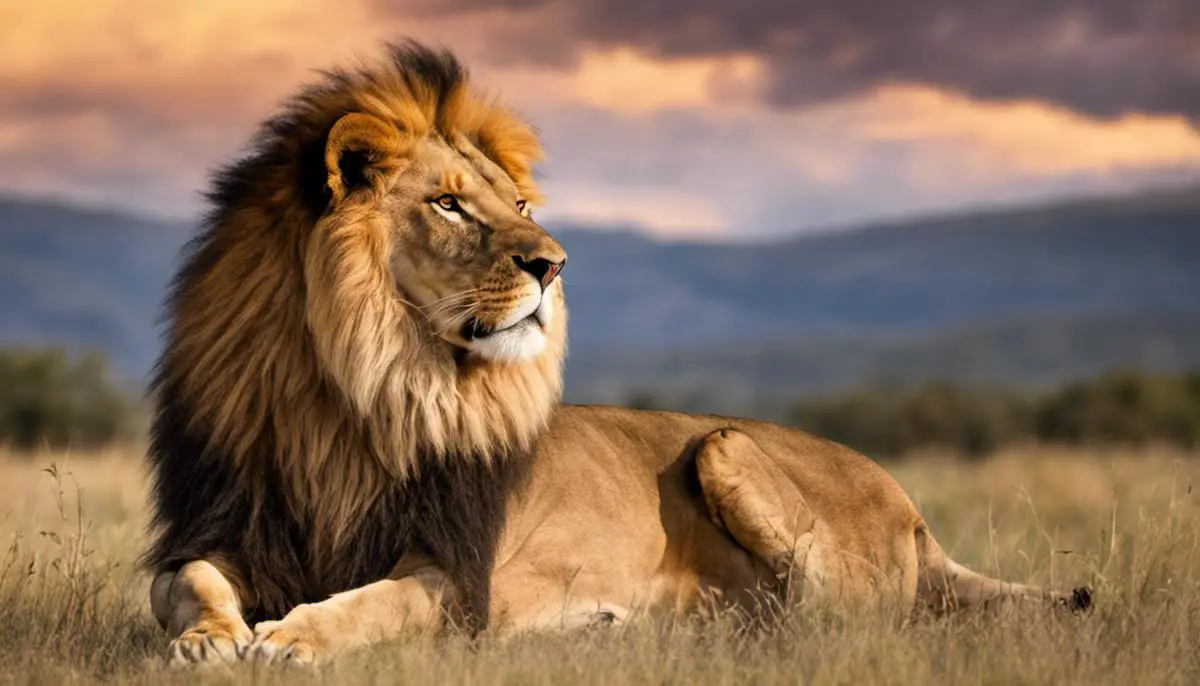Do Lions Grieve? An In-depth Study on Feline Mourning
Because of the magnificence of lions and the frequently brief and mysterious way in which they express their emotions, the story is exceedingly difficult to interpret.
This investigation aims to delve deep into the lion kingdom and uncover behavioural trends that would suggest the lions are capable of experiencing an emotional reaction akin to human sadness.
The lion, the famous king of animals, is subjected to close examination and in-depth analysis in this discourse, which aims to grasp their fascinating behavioural complexity as much as it does to refute or support particular hypotheses.
This investigation into the depths that go beyond what we’d naturally attribute to the animal kingdom uncovers astonishing findings and fascinating conclusions about the mourning behaviour of lions and its implications for their intricate social structures. The treatise compares a number of species within the feline family.
Behavioural Indicators of Grief in Lions – Mourning Behaviours in Lions: An In-Depth Examination
Observing behavioural cues in animal species aids in the understanding of social and emotional complexities. Lions (Panthera leo), as iconic, social, big cats, provide a fascinating case study indicative of emotional depth. Research suggests that these apex predators may display observable behaviour associated with mourning.
Extensive study and documented observations point towards distinct behavioural changes in lion prides following the death of a member. These behaviours, strikingly similar to human mourning rituals, underscore the probability of consolation and grieving phenomena in the feline species – an enigma that continues to captivate researchers into behavioural ecology.
One of the inaugural signs of mourning in lions is behavioural disarray. Following the death of a pride member, lions display a noticeable disruption in their routines. Changes in feeding, sleeping, and social interaction patterns go beyond what could be attributed to changes in pride dynamics or hierarchy. This behavioural disarray is often paralleled with human grieving processes, reinforcing the theory of emotional distress.
Vocalisations emitted by lions post the demise of a pride member offer further insights into their emotional landscape. Lions are known to ‘roar’ more frequently and at length, typically during twilight hours. Certain researchers surmise this to be a type of bereavement call, communicating emotional distress or seeking consolation from other pride members.
Beyond vocalisations, tactile expressions such as nuzzling and licking the deceased remain a compelling symbol of affection and grief among lions. This has been observed repeatedly, with members seen lingering around the body or the site of demise for elongated periods. The behaviour strongly mirrors displays of physical affection seen in humans, suggestive of genuine mourning.
Moreover, lionesses that lose their cubs are reported to exhibit signs of visible distress, effectively breaking normal behavioural patterns and remaining near the carcass. Often, these lionesses display a markedly lower appetite, lethargic behaviour, and a tendency to isolate themselves from the pride—behaviours concurrent with human symptoms of mourning.
Strong bonds maintained within lion prides necessitate further inquiry into their emotional structures, as the depth of empathy displayed denotes advanced social and emotional complexity. Identifying and understanding mourning behaviours in these majestic creatures hold profound implications – not only in the realm of animal behavioural studies but also for broader understanding of empathy and emotion within the animal kingdom.
The exploration of mourning behaviours in animals, lions in particular, continues to unveil layers of socio-emotional depth previously unattributed to non-human species. Emotive capacities in animals push the envelope of conventional scientific understanding, revealing a world of emotional intelligence that dramatically narrows the perceived gap of sentience between humans and animals.
It is an ever-evolving line of inquiry requiring unabating passion and commitment—an intellectual pursuit that generates a plethora of questions pertinent to a profound exploration of animal behaviour, cognition, empathy, and grief. It is essential to acknowledge that the study of mourning in animals, embodied here by lions, may provide an avenue to better appreciate the intricate tapestry of life that binds all living creatures in shared experiences of connection, loss, and love.

Comparative Mourning Behaviour in Felines
Looking into grieving behaviours in the feline family as a whole expands beyond just lions. Due to their solitary nature, leopards and cheetahs do not exhibit the same overt grieving behaviours as their social counterparts, the lions. But there has been evidence of severe emotional suffering, particularly when a woman loses her child. Observations show persistent calling and searching behaviour, defining characteristics of mourning.
Inter-species behaviour comparison finds us within the fascinating world of the domestic cat, a distant relation yet holding behavioural similarities. Domestic cats have been known to exhibit noticeable changes in behaviour upon the loss of a human or animal companion, such as loss of appetite, lethargy, and increased vocalisation, echoing parallels with lion mourning customs.
Scientifically measuring emotional states in non-human animals still draws interminable debate. Yet anecdotal data, personal experiences, and careful examinations of behavioural changes lend unequivocal support towards the existence of grief in animals.
Furthering this evidence-based exploration of feelings in non-human species, certain populations of tigers have exhibited fascinating behaviours that suggest mourning. In the confined environment of a zoo or an animal sanctuary, tigers exhibited noticeable restlessness and signs of agitation upon the death of a familiar animal, including humans. Notably, a particular event recorded a female tiger who stopped eating for days following the death of her human keeper, shying away from unfamiliar humans, indicating a form of bereavement.
A change in behavioural patterns is a salient and commonly used indicator of grief in animals, such as restlessness, a decline in feeding habits, and an apparent lack of interest in their surroundings. However, in a truly scientific spirit, it must be admitted that while these patterns strongly suggest the progression of a mourning process, they can’t be entirely definitive on their own.
In the vast world of felines, from lions to the domestic cats that reside in our homes, it’s becoming increasingly clear that these enigmatic creatures possess more than just instinct. They display behaviours that strongly suggest the presence of complex emotional lives, the dimensions of which are yet to be fully comprehended.
The study of grief in animals is not only essential for advancing knowledge and improving living conditions for these remarkable creatures but also for understanding our own emotional landscapes. As we unravel the mystery of animal emotions, it provides a mirror to reflect upon our own existence, deepening our understanding of our place in the intricate web of life.
However, it’d serve us well to remember that despite this mind map closely resembling human manifestation of grief, we must refrain from excessive anthropomorphisation, as it might lead to erroneous interpretations. Striving for insight, while maintaining respect for the uniqueness of animal experience, must continue to guide our explorations in ethology.

Implications for Lion Social Dynamics
Recognising grief in lions does more than just suggest at the emotional depth these creatures possess. Delving deeper from previous discussions, it provides a unique perspective on how they operate in social configurations. Studying the social dynamic of lions through the lens of their grief behaviour might indeed elucidate these royal beasts’ nuanced group interactions.
It is well-understood that lion prides are predominantly familial units, anchored together by strong social bonds, a solid base that contributes to their survival in the wild. A pivotal element of this intricate social structure is the individual roles and social hierarchy. However, the demise of a pride member disrupts this seemingly organized structure, triggering a ripple effect whose effects can be strikingly profound.
An easily observable manifestation is the disruption in hunting patterns. The coordinated efforts of lionesses working together during a hunt speak volumes of their innate understanding of their collective strength. The death of a member, especially a proficient hunter, can significantly impair the pride’s hunting efficiency. Compounded by the observed decline in feeding habits during the mourning period, the pride’s survival can potentially be at risk.
Further, the death of an alpha male can incite substantial social upheaval in a lion pride. Here, the loss transcends emotional suffering, often culminating in physical altercations and power struggles aimed at filling the vacant alpha position.
The implications for pride could involve dispersion or takeover, counteracting the cohesion they inherently strive to maintain. This accentuates the indispensability of individuals within the pride setting, thereby pointing towards the magnitude of their societal structure’s complexity.
Notably, pronounced mourning behaviours have been predominantly documented in lionesses, arguably as a result of their disposition to raising young ones. This observation leads to the hypothesis that grief may serve a protective function, necessitating a behavioural adjustment to prevent future loss. It can potentially be an evolutionary adaptation in response to ongoing threats to a pride’s endurance.
Furthermore, observing a direct relationship between the depth of grief and the strength of the bond shared with the deceased accentuates the significance of relationships in lion social interactions. Patterns of strong attachment, generally observed between mothers and offspring or amongst siblings, may afford a novel instrument to gauge relationship quality within the pride.
While these findings start to unlock a further understanding of lion social dynamics, it is of utmost importance to cautiously approach such areas of study. Grief, as we understand it, is undeniably a complex and multilayered emotion.
Consequently, attributing it to non-human animals based on behavioural cues warrants a diligent consideration of potential anthropomorphism. Further research dedicated to testing such hypotheses concerning grief and its social implications remains paramount to refining our understanding.

Scientific Criticisms and Skepticism
The anthropomorphic interpretation of animal behaviour represents a controversial area of study that raises significant scepticism and criticism in scientific circles.
Anthropomorphism refers to the application of human attributes, such as emotions and characteristics, to animals—in this case, lions. Critics of this approach suggest that it is unscientific, lacks objectivity, and may even mislead our understanding of animal behaviours. Yet, this perspective, while valuable in its caution, may overlook the depth of understanding that can be gleaned by critically analysing the behavioural symptoms of emotions in non-human species.
One focal point in the debate is the notion of ‘mourning’ in lions. Some researchers opine that interpreting the changes in pride behaviour following the death of a member as ‘mourning’ is a projection of human grief onto these magnificent creatures. They contend that the observed behavioural changes could have other explanations, such as a fight for dominance or a response to a change in social dynamics. Thereby, attributing human-like emotional responses to these changes can misconstrue the animals’ natural behaviours.
The concept of ‘grief’ in animals is contentious. Critics argue that grief, a complex emotional reaction involving cognitive and emotional processes, requires self-awareness and an understanding of the concept of death – attributes that we cannot definitively prove in lions. It could be argued, then, that this anthropomorphic lens might oversimplify or misinterpret the complexities of their experiences.
Furthermore, there is scepticism surrounding the interpretation of lions’ tactile expressions and vocalisations following the death of a pride member. Critics propose that these behaviours might be a response to the absence of a familiar presence rather than an assertion of profound sadness or distress. Prescribing an emotional significance to these behaviours can lead us to anthropomorphise lions, potentially obscuring our understanding of their intriguing social structures and dynamics.
Moreover, the perceived disarray within prides following a death might not necessarily be indicative of ‘mourning’, but rather a restructuring of social hierarchy and roles. For example, the death of an alpha male lion usually results in upheaval as remaining males compete for dominance. This behavioural transformation might be misconstrued as mourning when viewed through an anthropomorphic lens.
While proponents of the anthropomorphic approach assert that it promotes a more humane treatment of animals, critics fear that it could lead to misinterpretations of animals’ biological needs and natural behaviours, and ultimately jeopardise their well-being in captivity and the wild.
In summary, the anthropomorphic interpretation of lion behaviour harbours robust criticism and scepticism. Detractors argue it walks a fine line between facilitating our understanding of these creatures and misdirecting our perceptions. Such ongoing disputes emphasise the complexity of studying animal cognition and behaviour and reflect the compelling intrigue that lions, as emblematic wild creatures, continue to exert on human curiosity.
However, one thing remains certain: these debates underline our imperative to respect and maintain the integrity of the natural behaviours of wild creatures such as lions. In bridging the conceptual gap between human and non-human species, the cautious, contextual, and critical application of anthropomorphism could serve us well.

Regrouping a significant weight of evidence, this investigation offers a poignant perception of the emotional depth of lions. The behavioural indicators often suggest that grief is by no means definitive, yet we cannot ignore the profound manifestations that compel us to think otherwise.
When we extend the understanding across species, we arrive at an intriguing crossroads of inter-species behaviours and emotions, highlighting both commonalities and disparities. Through the examination of lion social structure and the accompanying dynamics that grief behaviour potentially influences, the depth of the emotional palette within the lion kingdom is undeniably intricate.
However, as the final section evaluates the associated scientific criticisms and skepticism, it is essential to remain cautious and not let our emotional interpretation get the better of our judgment, promoting the importance of objective discernment in the pursuit of scientific truth.
